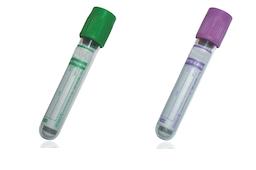Suitable Specimen Types
- Li Hep
- EDTA Whole Blood
Specimen Transport
Transport to laboratory at ambient temperature. A time matched control sample should also accompany the patient sample to correct for temperature fluctuations, agitaiion and any other transport related eventsSample Processing in Laboratory
Sample processed under aseptic conditions in the laboratorySample Preparation
Sample used is whole blood no extra preparation requiredTurnaround Time
7-14 DaysSample Stability
Sample should ideally be tested within 24 hours but may be utilises up to 48 hours. Specimens older than 48 hours are unsuitable.CD 62 Ligand shedding Assay
General Information
All tests must be booked with the laboratory (0121 4243702). The laboratory may not be able to process unbooked samples due to time and staffing constraints
Toll-like receptors are key molecules that alert the immune system to the presence of microbial infections. TLRs are a type of pattern recognition receptor (PRR) and recognize molecules that are broadly shared by pathogens. Ten human TLR have been identified. TLR 1,2,4,5,6 are located in the plasma membrane, and TLRs 3, 7, 8, and 9 are situated in the membranes of endosomes and lysosomes. They are transmembrane receptors, with an intracellular domain that interacts with a variety of protein kinases, including IRAKs (IL-1R-associated kinases) and MAPKs (mitogen-activated protein kinases). TLR stimulation results in activation of transcription factors that regulate specific patterns of gene expression, initiating both innate and adaptive immune responses. TLR signaling consists of at least two distinct pathways: a MyD88-dependent pathway that leads to the production of inflammatory cytokines, and a MyD88-independent pathway associated with the stimulation of IFN-β and the maturation of dendritic cells. Inborn defects of the innate immune response involving Toll-like receptor (TLR) and interleukin-1 receptor (IL-1R) family signalling are Mendelian primary immunodeficiencies that predispose children to life-threatening invasive pneumococcal disease. IL-1R and TLRs share an intracellular domain known as the Toll-IL-1R domain (TIR). IRAK-4 is a cytosolic serine threonine kinase acting downstream from all TLRs (apart from TLR3) and IL-1Rs (including IL-1, IL-18 and IL-33). MYD88 is a cytosolic adapter molecule connecting TIRs to the IRAK signaling complex, resulting in activation of NF-kB and MAP kinase pathways. Activation via the IRAK-4/MYD88 pathway results in production of pro-inflammatory cytokines and induction of an acute phase response. IRAK-4 deficiency was first described in humans in 2003 by Picard et al. IRAK-4 and MyD88 deficiency (described in 2008), are the most common TLR –related deficiencies, and are phenocopies in terms of clinical manifestations. Both are autosomal recessive, and present with a narrow range of (usually) noninvasive pyogenic bacterial infections of the respiratory tract and skin, most commonly caused by Streptococcus pneumonia, Staphylococcus aureus and Pseudomonas aeruginosa. Recurrent meningitis, arthritis, osteomyelitis, sepsis, ENT infections, and lymphadenitis are also common presentations. Pneumonia is uncommon, and infection with non-pyogenic agents such as mycobacteria, viruses and fungi are rare. IRAK-4/MYD88 deficiencies both result in absence of an acute phase response despite life-threatening infection. This is due to poor IL-6 production, which drives CRP production. Failure to maintain a polysaccharide antibody response, transient neutropenia during infection and delayed umbilical cord separation (in 20% patients) are useful diagnostic adjuncts. Impaired allohaemagglutinin (one third), high serum IgE (two thirds) high IgG4 (one third) may be noted during routine testing, but interestingly such patients are not predisposed to allergic disease. Clinical outcome if undiagnosed is poor, with a mortality rate of 30-40% in infancy and childhood. Spontaneous improvement occurs in adolescence, attributed to the development of adaptive cellular immunity. Antibiotic prophylaxis, anti-pneumococcal vaccination and immunoglobulin infusions are beneficial in the interim. IRAK-4 deficiency was originally detected by measuring in vitro production of IL-6 or TNF by whole blood or peripheral blood mononuclear cells following stimulation by TLR agonists, and measured by intracellular cytokine production or ELISA. This SOP uses a rapid screening method for IRAK-4/Myd88 deficiency, measuring CD62L shedding from neutrophils (Von Bernuth et al 2006).
Patient Preparation
No specific patient preparation required.
Reference Range
Results are reported as Normal, Abnormal or indeterminate No CD62L shedding in response to LPS and CL097 would be considered an abnormal result and is indicative of a defect in the TLR signalling pathway, Molecular confirmation of the mutation is required.
